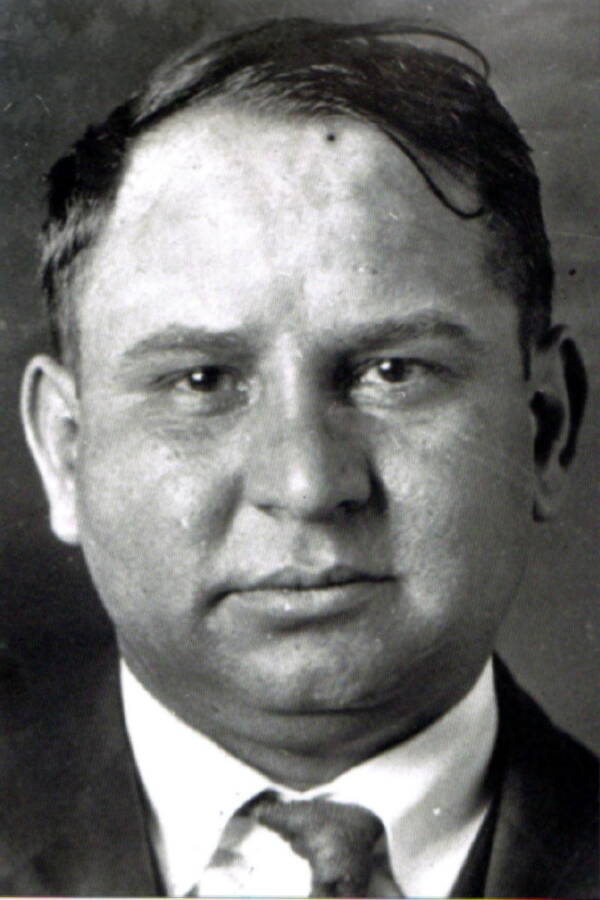The Rise Of The Italian Mob
In 1910, Morello and his main men were picked up on counterfeiting charges. Police tried and failed to connect Ignazio Lupo with more than 60 suspected murders. This incompetence on behalf of the police perhaps made New York appear all the more attractive to aspiring gangsters.
The Mafia only grew from there.
Following these arrests, Morello’s associate Joe Masseria took over as head of the family. Born in Sicily in 1886, “Joe the Boss” Masseria was famous for his ability to dodge bullets and spot criminal talent.
Masseria recruited hungry young mafiosos eager to prove themselves. His protégés included the enterprising former Five Pointer Lucky Luciano and the deadly Umberto “Albert” Anastasia.
In so doing, Masseria had effectively jumpstarted the next generation of organized crime in New York City.
When Morello was released in 1920, he did not try to reclaim his position at the head of the family. Seemingly satisfied with his apprentice’s performance, Morello agreed to serve as Masseria’s consigliere, meaning “advisor,” as well as his top strategist.

Wikimedia CommonsGiuseppe “Joe the Boss” Masseria’s 1922 mugshot.
Reinvigorated under the leadership of Masseria, the Morello gang began to flex on other Mafia families. Masseria declared himself the capo dei copi, or “boss of bosses,” taking the helm of the underworld in New York.
Masseria employed Anastasia as a hitman. At the time, he was even nicknamed the “Lord High Executioner.” But as Masseria would learn all too late, the young muscle’s loyalty wasn’t entirely to him.
Inflated by his recurring successes, it’s easy to imagine why Masseria went after Nicolo Schiro, the leader of what would later be called the Bonanno crime family. Schiro was timid and often unwell. Many felt he was a questionable choice for a mafioso, let alone a mob boss.
Masseria offered him $10,000 to get out of the business. The alternative was a bullet. Schiro accepted and went into hiding — but not without sending a message to his protégé.
The First War Within The Italian Mob
That protégé was Salvatore Maranzano, who had been making an impression in America since his arrival from Sicily after World War I.
Well-educated and well-read, Maranzano earned the nickname “Little Caesar” for his habit of lecturing his men on ancient Rome. Most importantly, he studied and tried to teach the battle strategies of Julius Caesar in the violent criminal underbelly of New York.
Schiro bid Maranzano to challenge Masseria for power. Meanwhile, in 1929, unknown assailants kidnapped, beat, and nearly killed Masseria’s ally Luciano, leaving his face permanently disfigured on one side.
The incident allegedly earned Luciano the nickname “Lucky.” There are competing theories about who exactly was responsible for his attack.

Wikimedia CommonsLucky Luciano’s 1936 mugshot, with scarring visible on one side from the 1929 attack.
This sparked a year-long slaughter of gangsters across multiple families in bids for retribution, alliance, and revenge. By 1930, the conflict was a full-blown battle. It was dubbed the Castellammerese war.
Masseria became so paranoid in this time about who he could trust that he made a first fatal misstep. He ordered the death of a former ally — Gaetano Reina, head of the Lucchese crime family — and tainted his reputation with other allies in the process.
In August of 1930, a Castallammerese ambush killed Giuseppe Morello in his office and deprived Masseria of much-needed advice. By November, even former Morello gang members had defected to Maranzano.
Ever the opportunist, Luciano wondered if perhaps he had chosen the wrong side. Masseria had been useful to him as an amateur gangster. But prohibition had been good to Luciano and he didn’t need a mentor anymore.
As of 1925, the illegal liquor market had earned Luciano as much as $12 million per year, and he was not the kind of man to rest on laurels. Besides, a bloody war like this distracted mafiosos from making more money.
So Luciano gathered some allies and approached Maranzano with a deal.





